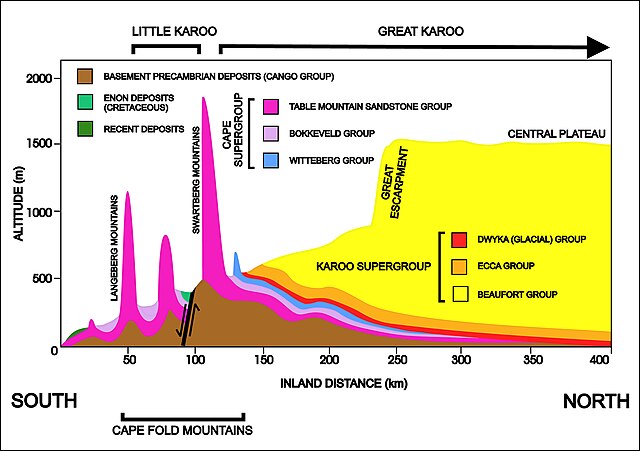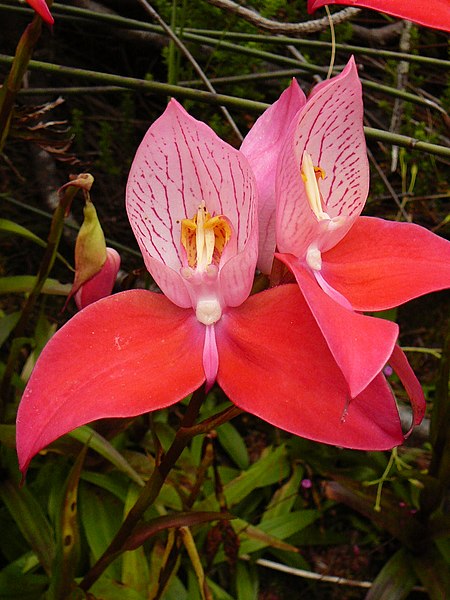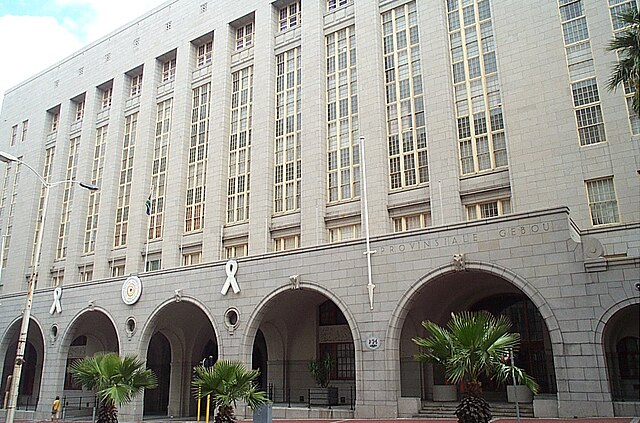The Swartberg mountains are a mountain range in the Western Cape province of South Africa. It is composed of two main mountain chains running roughly east–west along the northern edge of the semi-arid Little Karoo. To the north of the range lies the other large semi-arid area in South Africa, the Great Karoo. Most of the Swartberg Mountains are above 2000 m high, making them the tallest mountains in the Western Cape. It is also one of the longest, spanning some 230 km from south of Laingsburg in the west to between Willowmore and Uniondale in the east. Geologically, these mountains are part of the Cape Fold Belt.
Swartberg pass
Small (Klein) Swartberg Range from the Laingsburg area
A diagrammatic 400 km north–south cross-section through the southern portion of the Western Cape, South Africa, near Calitzdorp in the Little Karoo (approximately 21° 30’ E), showing the relationship between the Little and Great Karoos, separated by the Swartberg mountain range. The significance of the various geological layers (coloured layers) can be found in the articles on the Karoo Supergroup and Cape Fold Belt. The heavy black line flanked by opposing arrows is the fault that runs for nearly 300 km along the southern edge of the Swartberg Mountains. The Swartberg Mountain range owes some of its great height to upliftment along this fault line. The subsurface structures are not to scale.
View of the Meiringspoort pass
The Western Cape is a province of South Africa, situated on the south-western coast of the country. It is the fourth largest of the nine provinces with an area of 129,449 square kilometres (49,981 sq mi), and the third most populous, with an estimated 7 million inhabitants in 2020. About two-thirds of these inhabitants live in the metropolitan area of Cape Town, which is also the provincial capital. The Western Cape was created in 1994 from part of the former Cape Province. The two largest cities are Cape Town and George.

A diagrammatic 400 km south–north crosssection through the Cape at approximately 21° 30' E (i.e. near Calitzdorp in the Little Karoo), showing the relationship between the Cape Fold Mountains (and their geological structure) and the geology of the Little and Great Karoo, as well as the position of the Great Escarpment. The colour code for the geological layers is the same as those used in the diagram above. The heavy black line flanked by opposing arrows is the fault that runs for nearly 300 km along the southern edge of the
The Red Disa (disa uniflora) is an orchid endemic to the Western Cape. It is the province's official flower.
Provincial government headquarters in Cape Town
A wheat field near Porterville in the Bergriver Municipality. Wheat is a common agricultural crop in the area.







